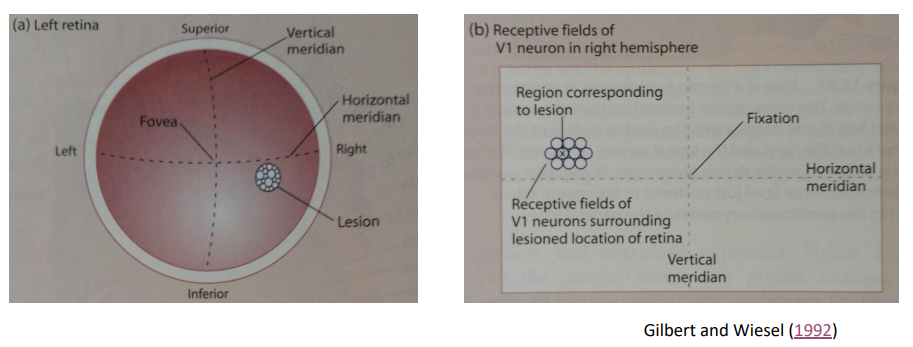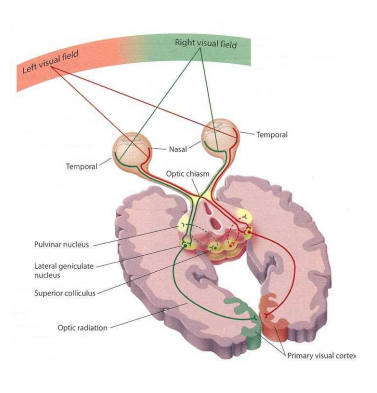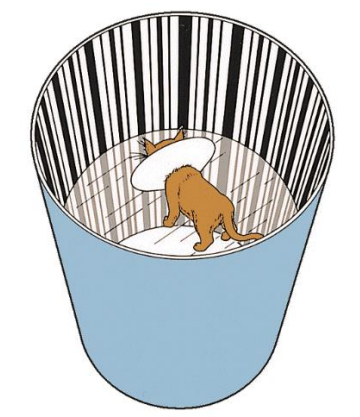Plasticity
1/20
There's no tags or description
Looks like no tags are added yet.
Name | Mastery | Learn | Test | Matching | Spaced |
|---|
No study sessions yet.
21 Terms
Neuroplasticity
Change in neural networks, re-organization of the brain • Changes in patterns of activations • Change in neuronal connections • Neurogenesis (new cells) • Change in cortical representation
“Plasticity, then, in the wide sense of the word, means the possession of a structure weak enough to yield to an influence, but strong enough not to yield all at once.” For example, “our nervous system grows to the modes in which it has been exercised”. “[H]abit diminishes the conscious attention with which our acts can be performed.” - James, W. (1890): The Principles of Psychology
Juggling: changes in brain volume and spatial
Draganski et al. (2004) • 24 Participants (mean age 22) learned juggling for three months • Three MRI whole-brain scans: before training, after training, three months after training. • Comparison with nonjuggling controls • Changes in areas associated with complex motion. • No sig. changes to motor areas.
Taxi drivers: changes in region volume and spatial capacity
Maguire, Woollett & Spiers (2006): ● Taxi drivers had greater grey matter volume in mid-posterior hippocampi and less volume in anterior hippocampi ● Years of navigation experience correlated with hippocampal gray matter volume only in taxi drivers (and not in bus drivers) ● Taxi drivers were better at spatial tasks using existing information, but worse at tasks involving new information ● Expert navigation, associated with greater posterior hippocampal gray matter volume, might come at a cost to new spatial memories and gray matter volume in the anterior hippocampus. ● Changes in hippocampal volume: new cells (neurogenesis) or changes in existing cells?
If neurogenesis is largely restricted to hippocampus (and perhaps doesn’t even happen in the hippocampus), how else could neuroplasticity happen?
n humans neurogenesis is restricted to infancy
Long-Term Potentiation (LTP) ● Requires pre & post synaptic activity ○ Neurons that ‘fire together wire together’ ○ Coincidence detection ○ Biological implementation of Hebbian Learning? ● Makes future depolarization easier by: ○ Increasing the number of synapses ○ Increasing the number of postsynaptic receptors.
Plasticity of cortical maps
Body (somatotopic) maps Auditory (tonotopic) maps Visual (retinotopic) maps
Plasticity in somatotopic maps
Example: In string players, the cortical representation of fingers changes based on use. (experience and use of left or right hand )
Study by Allard et al. (1991): When fingers are sewn together in chimps, the brain's representation of those fingers merges, showing rapid cortical reorganization.
Plasticity of tonotopic maps
Example: Musicians have enlarged cortical representations for piano tones, correlating with the age they began training.
Implication: Auditory cortex can reorganize based on experience, particularly in response to complex sounds like music.

Plasticity of retinotopic maps
Example: Damage to the retina leads to rapid reorganization of the visual cortex, with surrounding neurons taking over the functions of the damaged area.
Implication: The brain can compensate for sensory loss by reallocating resources.

Development of the visual system and critical periods
Hubel and Wiesel - eye patching
Ocular dominance columns Hubel, D. H., & Wiesel, T. N. (1970). The period of susceptibility to the physiological effects of unilateral eye closure in kittens. The Journal of physiology, 206(2), 419. • Effects of eye closure strongest in the 4th and 5th week. • After extended eye closure (3 months), little chance of recovery over the next years.

Blakemore’s cats
Development of the visual system and critical periods
Blakemore, C., & Cooper, G. F. (1970). Development of the brain depends on the visual environment. Nature 228, 477 - 478 (31 October 1970); doi:10.1038/228477a0 • Exposure to horizontal or vertical stripes for 5h per day from age 2wks to age 5mths • Disorientation after placed in a normal environment, with quik recovery. • However, som effects remained – abnormal behaviour, blindness to some contours. • Single neuron recordings showed abnormal responses to some patterns
Cats raised in environments with only vertical or horizontal stripes develop abnormal visual processing, showing that early sensory experience shapes cortical organization.

Berardi et al critical periods
Berardi et al. (2000):
Findings: Critical periods can be prolonged by sensory deprivation (e.g., dark rearing), suggesting that experience is crucial for normal development.
Learning a second language…
“The evidence reviewed so far portrays a picture that is highly consistent with structural neuroplasticity observed for other domains: second language experience-induced brain changes, including increased gray matter (GM) density and white matter (WM) integrity, can be found in children, young adults, and the elderly; can occur rapidly with short-term language learning or training; and are sensitive to age, age of acquisition, proficiency or performance level, language-specific characteristics, and individual differences.” Li, P., Legault, J., & Litcofsky, K. A. (2014).
Li et al. (2014):
Findings: Learning a second language leads to structural changes in the brain, including increased gray matter density and white matter integrity.
Implication: Language learning induces neuroplasticity across different ages, with changes influenced by age of acquisition, proficiency, and individual differences.
8. Cross-Modal Plasticity
Sharma et al. (2000):
Findings: In ferrets, rerouting visual input to the auditory cortex leads to the development of orientation-selective neurons in the auditory cortex.
Implication: The brain can adapt to new sensory inputs, even in areas not typically associated with that modality.
Exercise and Neuroplasticity
Erickson et al. (2011):
Findings: Aerobic exercise increases hippocampal volume and improves memory in older adults.
Implication: Physical activity can reverse age-related brain atrophy and enhance cognitive function.
Video Games and Plasticity
Li et al. (2011):
Findings: Playing video games can improve visual functions in adults with amblyopia (lazy eye), showing that the adult brain retains plasticity.
Implication: Even in adulthood, targeted interventions can induce significant neuroplastic changes.
12. Long-Term Tracking of Brain Changes
Poldrack et al. (2015):
Findings: Long-term tracking of a single individual's brain over 18 months showed dynamic changes in brain connectivity, gene expression, and metabolites.
Implication: The brain is constantly changing in response to daily experiences, and these changes can be tracked over time.
Key Takeaways
Neuroplasticity is a fundamental property of the brain, allowing it to adapt to new experiences, learn new skills, and recover from injury.
Critical periods exist during development when the brain is most sensitive to sensory input, but plasticity continues throughout life.
Neurogenesis occurs in the adult hippocampus, but most plasticity involves changes in existing neurons rather than the creation of new ones.
Experience-dependent plasticity is evident in musicians, language learners, and even video game players, showing that the brain can reorganize based on use.
Exercise and targeted interventions can enhance neuroplasticity, particularly in older adults, suggesting that lifestyle choices can influence brain health.
Further reading
Study Overview:
Objective: To investigate whether aerobic exercise can increase hippocampal volume and improve memory in older adults.
Participants: 120 older adults without dementia were randomly assigned to either an aerobic exercise group (60 participants) or a stretching control group (60 participants).
Intervention: The aerobic exercise group engaged in moderate-intensity aerobic exercise (e.g., walking) for 3 days a week over 1 year, while the control group performed stretching and toning exercises.
Measurements: MRI scans were conducted before the intervention, after 6 months, and after 1 year to measure changes in hippocampal volume. Memory performance was also assessed.
Key Findings:
Hippocampal Volume: The aerobic exercise group showed a 2% increase in hippocampal volume, effectively reversing age-related loss by 1 to 2 years. In contrast, the control group experienced a decline in hippocampal volume.
Memory Improvement: The increase in hippocampal volume was associated with improved spatial memory performance.
Brain-Derived Neurotrophic Factor (BDNF): Higher levels of BDNF, a protein that supports neurogenesis, were observed in the aerobic exercise group, suggesting a potential mechanism for the observed changes.
Implications:
Neuroplasticity in Aging: Aerobic exercise can induce structural changes in the brain, particularly in the hippocampus, which is critical for memory.
Cognitive Health: Regular physical activity may help protect against age-related cognitive decline and reduce the risk of dementia.
2. Video Games and Plasticity (Li et al., 2011)
Study Overview:
Objective: To determine whether playing video games can improve visual functions in adults with amblyopia (lazy eye).
Participants: 20 adults with amblyopia (ages 15–61) were recruited and divided into three groups: an action video game group (10 participants), a non-action video game group (3 participants), and a crossover control group (7 participants).
Intervention: Participants played video games (either action or non-action) for 40–80 hours over several weeks, using only their amblyopic eye.
Measurements: Visual functions, including visual acuity, positional acuity, spatial attention, and stereopsis (depth perception), were assessed before and after the intervention.
Key Findings:
Visual Acuity: Participants in the action video game group showed a 33% improvement in visual acuity.
Positional Acuity: Improvement of 16% in positional acuity.
Spatial Attention: Improvement of 37% in spatial attention.
Stereopsis: Improvement of 54% in stereopsis.
Comparison to Occlusion Therapy: The improvements were significantly faster than those typically observed with traditional occlusion therapy (patching the stronger eye).
Implications:
Adult Neuroplasticity: The adult brain retains the ability to reorganize and improve function, even in cases of long-standing visual impairment.
Therapeutic Potential: Video games, particularly action games, could be a valuable tool for treating amblyopia and other visual disorders in adults.
Long-Term Tracking of Brain Changes (Poldrack et al., 2015)
3. Long-Term Tracking of Brain Changes (Poldrack et al., 2015)
Study Overview:
Objective: To track dynamic changes in brain connectivity, gene expression, and metabolites over an extended period in a single individual.
Participant: A single human subject underwent intensive phenotyping over 18 months.
Measurements: The study included functional and structural brain connectivity using MRI, psychological and physical health assessments, gene expression analysis, and metabolomics (study of metabolites).
Data Collection: The participant was scanned multiple times over the 18-month period, and data were collected on a wide range of biological and psychological variables.
Key Findings:
Brain Connectivity: The study revealed dynamic changes in brain connectivity over time, with fluctuations occurring on the scale of days to months.
Gene Expression and Metabolites: Changes in brain connectivity were correlated with changes in gene expression and metabolite levels, suggesting a complex interplay between brain function and molecular biology.
Reproducibility: The study provided a reproducible analysis workflow and made the data openly accessible for further research.
Implications:
Dynamic Brain Changes: The brain is constantly changing in response to daily experiences, and these changes can be tracked over time.
Precision Medicine: This approach could serve as a testbed for developing precision medicine strategies for brain disorders, by understanding how brain function and molecular biology interact over time.
Summary of the extra readings
Summary of the Last 3 Studies
Exercise and Neuroplasticity (Erickson et al., 2011):
Key Finding: Aerobic exercise increases hippocampal volume and improves memory in older adults.
Implication: Regular physical activity can reverse age-related brain atrophy and enhance cognitive function, offering a protective effect against dementia.
Video Games and Plasticity (Li et al., 2011):
Key Finding: Playing action video games improves visual functions in adults with amblyopia.
Implication: Video games can induce significant neuroplastic changes in the adult brain, offering a novel therapeutic approach for visual impairments.
Long-Term Tracking of Brain Changes (Poldrack et al., 2015):
Key Finding: Dynamic changes in brain connectivity, gene expression, and metabolites can be tracked over time in a single individual.
Implication: This approach provides a foundation for precision medicine, allowing for personalized interventions based on individual brain and molecular profiles.
Overall Implications
Neuroplasticity is a Lifelong Process: These studies demonstrate that the brain remains adaptable throughout life, responding to physical activity, sensory input, and even video games.
Therapeutic Potential: Interventions such as exercise and video games can harness neuroplasticity to improve cognitive and sensory functions, even in older adults or those with long-standing impairments.
Precision Medicine: Long-term tracking of brain changes offers a pathway to personalized medicine, where interventions can be tailored to an individual's unique brain and molecular profile.
New chat